If you’ve ever taught children with special needs in the classroom, then you know the delicate balance required to keep students engaged while also helping them to build artistic skills.
Like many of you, I know I’ve often found myself worrying about how an activity I chose was going to be received by my students.
Would they like it?
Would it work?
If you teach children with special needs, you might be asking similar questions.
In Part 1 of my Teaching Art to Students with Special Needs series, I talked about the shift in mindset that I needed to adapt to teaching students with special needs. In this second installment of my 3-part series of articles on teaching art to students with special needs, I will be sharing with you suggestions for how to teach remotely.
With classrooms moving to online art in the spring, I was worried about losing momentum with my students. How could I keep up the skill building and engagement virtually?
Teaching art remotely to children with special needs can be challenging, but it can also open up limitless possibilities and creativity.
Before I move into practice tips, remember that as an art teacher, you are amazing and you already have everything you need to be successful.
And keep it simple! The less complicated a lesson is, the more you will be able to focus on the things that matter most, like nurturing the love of art in your students.
TIPS FOR TEACHING ART TO STUDENTS WITH SPECIAL NEEDS
Teaching Students With Special Needs Who Have Minimal Access to Supplies
In an ideal world, all children would have a robust collection of art supplies available to them at home. Unfortunately, that is not the case for many children.
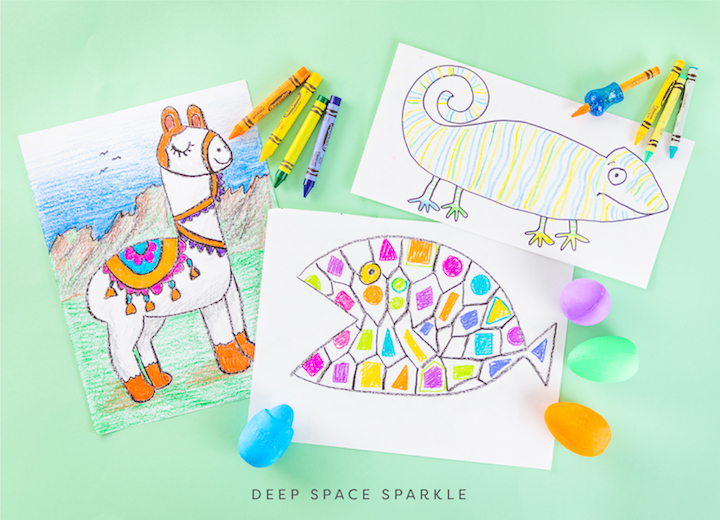
With many schools moving to online instruction to keep children safe during the pandemic, art teachers are left with the dilemma of figuring out how to get supplies to their students or teaching without them. If you find yourself in a situation where you students don’t have access to supplies, don’t worry. There are many things you can do to help your students develop artistic knowledge and skills without any supplies at all!
1. Choose a Good Book
There are many fantastic art books available. For example, Deep Space Sparkle offers a list of children’s books that feature Black artists. Choose any children’s book as your starting point. One example that I like to use to introduce artistic concepts to my children is The Dot by Peter H. Reynolds.
I would suggest reading the book aloud to them yourself, so that you can easily stop and point out details or ask questions. The children will also love hearing your voice.
2. Focus on One Concept at a Time
Online learning can be overwhelming for children, especially children with special needs. To help our little ones feel calm, consider focusing on one concept at a time.
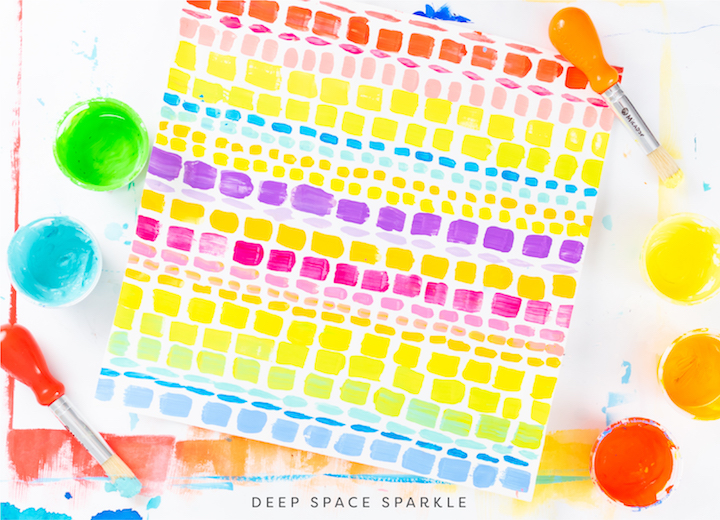
If you choose to start with a book like The Dot, then focus on just dots for that day. In future sessions, you can build on what they learned in the previous session. The next session could focus on lines, and after that you can focus on a particular shape or color.
Check out Deep Space Sparkle’s Epic Curriculum for more ideas.
3. Be Resourceful
If your children don’t have any supplies at home to use for art, have them use their fingers and their hands as their tools. For younger children and nonverbal children, I like to hold up two colors in front of the screen and ask them to point to the one I name.
Another thing you can have your children do is draw with their fingers. They can use their fingers to make dots, draw lines and trace shapes. They can even trace their hand using their finger!
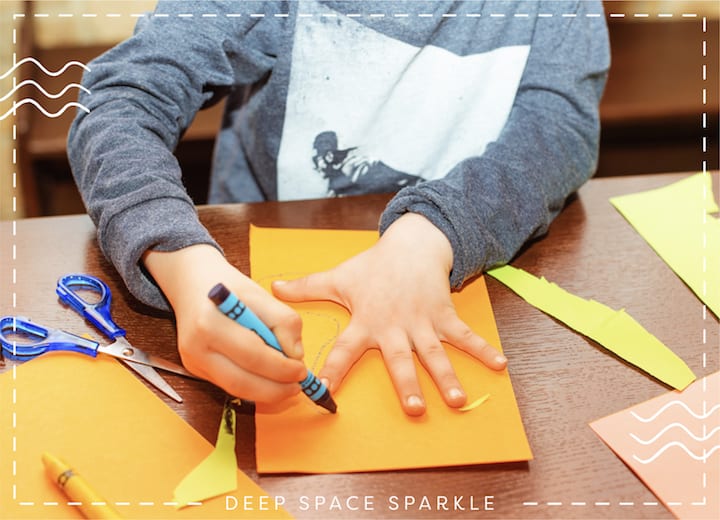
This provides great practice for drawing and helps to build fine motor skills. You can also ask your children to do an art scavenger hunt and find items in the room that match a certain color or shape. Children love movement, and this gets them up and moving around.
Deep Space Sparkle has great resources in their EPIC Color lesson for teaching color to your children.
4. Be Creative
As an art teacher, you know your students best. Tap in to their instincts and strengths to build an online curriculum that fits their needs.
Do you have a child that loves music? Find a way to incorporate that into your teaching. I often play music that is related to the project we are working on. For example, if we are doing a project about Native American art, then I will play some Native American flute music.
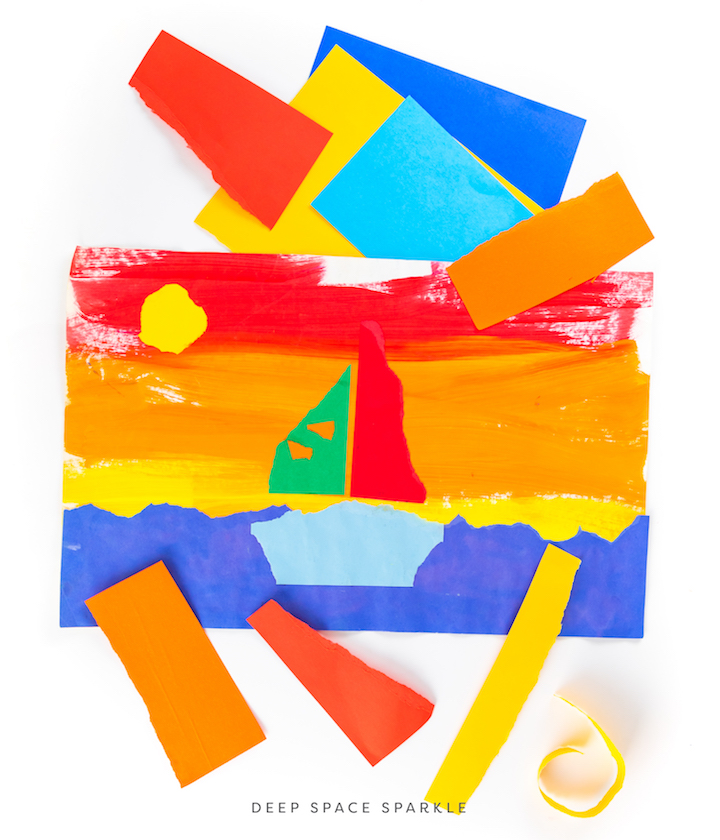
Another way I incorporate creativity into my teaching is by finding new uses for everyday materials and objects. Newspaper is a material that most people have in their homes and it can be used for many purposes, such as making paper mâché or using it as an armature for a sculpture.
I’ve also used it to make handmade paper. My students really enjoyed ripping the paper into little pieces. When working with children with special needs, don’t be afraid to embrace the crafty side of art making. And remember that you don’t have to do it alone.
Deep Space Sparkle has many resources and lessons as well as a supportive creative community that can help you be the best art teacher you can be whether you’re teaching in the classroom or online.
Join me in my final installment of my series where I share with you ideas for Modifying Art Lessons to Meet the Needs of Special Learners: Part III. And if you haven’t already, read my first post on the series Teaching Art to Children with Special Needs.

Have any questions? Please write any of your comments or questions in the comment section below.

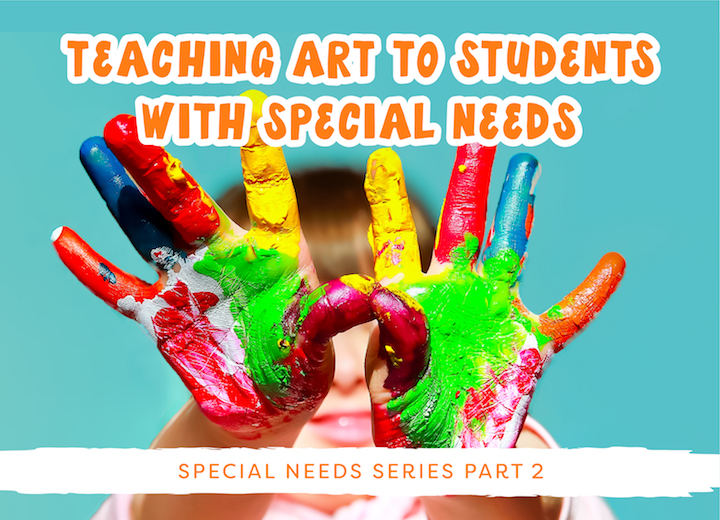












Wonderful job..thank you so much for the tips..hope if I will be able to teach my special one